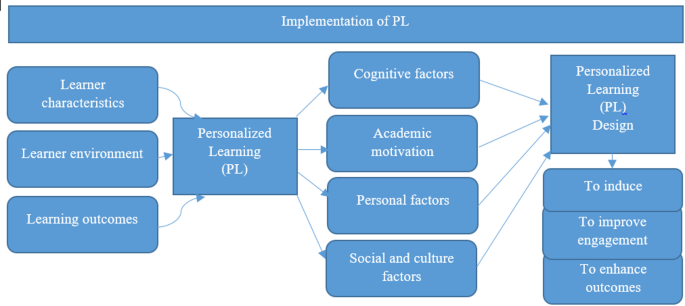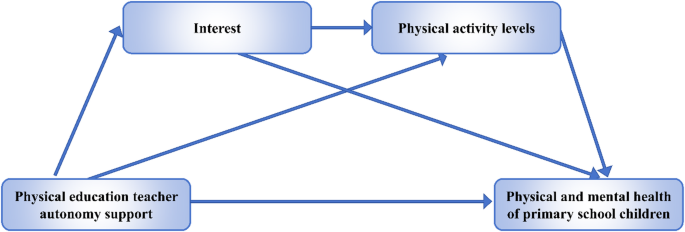Report on Utah’s K-12 Public School Enrollment Trends and Sustainable Development Implications
Executive Summary
For the third consecutive year, Utah’s K-12 public school system has recorded a decline in student enrollment, a reversal of a decade-long growth trend. The 2025-26 academic year saw a 1.7% decrease, representing 11,478 students. This trend has significant fiscal implications for school districts, as state funding is allocated on a per-pupil basis. The decline is attributed to complex demographic shifts, including lower birth rates and changing migration patterns. Concurrently, the proportion of students requiring specialized educational services is increasing. These developments directly impact the state’s progress toward several Sustainable Development Goals (SDGs), primarily SDG 4 (Quality Education), SDG 10 (Reduced Inequalities), and SDG 8 (Decent Work and Economic Growth).
Analysis of Enrollment Data (2025-26)
Key Statistics
- Total Enrollment: 656,311 students.
- Annual Decrease: 11,478 students (1.7% from the previous year).
- Historical Context: This marks the third straight year of decline, a significant shift from the consistent growth observed from 2000 to 2020.
District and Charter School Trends
- District-Level Impact: The enrollment decline is widespread, with 14 of the state’s 15 largest districts experiencing decreases of over 1%. The most substantial drops were reported in Salt Lake City, Granite, and Washington County school districts, each down 4.5%. In contrast, only Beaver County and Tooele County school districts recorded growth exceeding 1%.
- Charter School Growth: Enrollment in charter schools has continued to expand, growing by 3.6%. Charter school students now represent 13% of Utah’s total student population. This growth is uneven, with 49 charter schools reporting increased enrollment while 44 saw declines.
Evolving Student Demographics: Alignment with SDG 4 & SDG 10
While overall enrollment has decreased, the complexity of the student body’s needs has increased. This trend requires a strategic focus on inclusive and equitable education, directly aligning with the objectives of SDG 4 (Quality Education) and SDG 10 (Reduced Inequalities).
- Students with Disabilities: This population has grown to 89,893, or 14% of all students. This represents an 11% increase from the 2013-14 school year, emphasizing the need to uphold Target 4.5 by ensuring equal access to all levels of education for the vulnerable.
- English Language Learners: Now accounting for 58,419 students (9% of the total), this demographic has increased from 6% a decade ago. Addressing the needs of this group is critical for achieving equitable educational outcomes as outlined in SDG 4 and SDG 10.
- Economically Disadvantaged Students: The number of students facing economic hardship has decreased to 186,362 (28% of the total), down from a peak of 37% in 2014-15. While this is a positive development toward SDG 1 (No Poverty), this group remains a significant cohort requiring targeted support to ensure educational equity.
Causal Factors: Demographics, Migration, and Economic Pressures (SDG 8 & SDG 11)
The sustained decline in enrollment is driven by long-term demographic and economic factors that intersect with goals for sustainable communities and economic growth.
- Declining Fertility Rates: A primary driver is Utah’s falling birth rate. The state’s fertility rate is now 1.853 children per woman, which is below the 2.1 rate required for population replacement.
- Economic and Social Pressures (SDG 8): National and local economic trends, including affordability and the availability of child care, are identified as key factors influencing decisions regarding family size. These pressures relate directly to SDG 8 (Decent Work and Economic Growth), as stable economic conditions are foundational for family well-being.
- In-Migration Patterns (SDG 11): Although Utah is experiencing record in-migration, the demographic profile of new residents has shifted. An analysis by the Gardner Policy Institute indicates an increase in the migration of young adults (ages 20-24) and a decrease in the migration of families with school-aged children. This trend does not offset the declining birth rate and has implications for SDG 11 (Sustainable Cities and Communities), as it affects long-term planning for community infrastructure, including schools.
SDGs Addressed in the Article
SDG 4: Quality Education
- The article’s central theme is the state of K-12 public education in Utah, focusing on enrollment numbers, funding, and the composition of the student body. The Superintendent of Public Instruction’s statement, “Our focus remains on ensuring that every child, in every community, continues to receive a high-quality education,” directly aligns with the core mission of SDG 4.
- The discussion on the rising proportion of students requiring specialized services, such as “students with disabilities” and “English language learners,” highlights the goal of providing inclusive and equitable education for all.
SDG 10: Reduced Inequalities
- The article points to potential inequalities by highlighting the growing needs of specific student populations. The data showing that “14% of the total are students with disabilities” and “9% of the total [are] English language learners” underscores the importance of equitable resource allocation to ensure these groups are not left behind, especially when overall funding is impacted by declining enrollment.
- The mention of “economically disadvantaged students” (28% of the total) also connects to the goal of reducing inequalities within society and ensuring that economic status does not become a barrier to quality education.
SDG 8: Decent Work and Economic Growth
- The article connects the decline in school enrollment to broader economic factors that influence family decisions. It states that “Factors such as the economy, affordability, and the availability of child care have raised concerns among younger people more than ever before, driving Utah’s birth rate to decline.” This links the sustainability of the education system to the economic well-being and stability of the population.
SDG 11: Sustainable Cities and Communities
- The article discusses major demographic shifts impacting Utah, including a declining fertility rate and changing in-migration patterns. These trends directly affect community planning and the provision of essential public services like education. The challenge of managing a public school system with declining enrollment is a key aspect of ensuring communities remain sustainable and responsive to the needs of their residents.
Specific SDG Targets Identified
SDG 4: Quality Education
- Target 4.1: By 2030, ensure that all girls and boys complete free, equitable and quality primary and secondary education. The article’s entire focus on K-12 public school enrollment, the challenges of funding, and the commitment to quality education directly relates to this target of ensuring access to and completion of secondary education.
- Target 4.5: By 2030, eliminate gender disparities in education and ensure equal access to all levels of education… for the vulnerable, including persons with disabilities… and children in vulnerable situations. The article specifically identifies the rising proportion of vulnerable student groups, stating that “students with disabilities” now make up 14% of the student population and “English language learners” account for 9%. This highlights the challenge of ensuring equal access and specialized support for these groups.
- Target 4.a: Build and upgrade education facilities that are child, disability and gender sensitive and provide safe, non-violent, inclusive and effective learning environments for all. The article implies a connection to this target by noting that “sustained enrollment loss directly impacts state funding for school districts.” Reduced funding can threaten the ability of districts to maintain and upgrade facilities to meet the needs of an increasingly diverse student body, including those with disabilities.
SDG 10: Reduced Inequalities
- Target 10.2: By 2030, empower and promote the social, economic and political inclusion of all, irrespective of… disability… or other status. The article’s focus on the growing share of students with disabilities and English language learners connects to this target. Providing them with a high-quality education is a primary mechanism for their social and economic inclusion.
- Target 10.3: Ensure equal opportunity and reduce inequalities of outcome. The superintendent’s pledge to ensure “every child, in every community, continues to receive a high-quality education, regardless of statewide fluctuations” is a direct expression of this target, aiming to provide equal educational opportunities despite demographic and funding challenges.
SDG 8: Decent Work and Economic Growth
- Target 8.5: By 2030, achieve full and productive employment and decent work for all women and men. The article links declining birth rates to economic pressures, including “affordability, and the availability of child care.” These factors are directly related to the ability of individuals, particularly women, to participate fully in the workforce while raising a family, which is a key component of achieving decent work for all.
SDG 11: Sustainable Cities and Communities
- Target 11.3: By 2030, enhance inclusive and sustainable urbanization and capacity for… sustainable human settlement planning. The article details the demographic shifts (“declining birth rate,” changing “in-migration” patterns with “fewer families” and “more young adults”) that are critical data for sustainable community planning. The impact of these shifts on the public school system is a clear example of the challenges involved in planning for sustainable communities.
Indicators for Measuring Progress
SDG 4: Quality Education
- Implied Indicator for Target 4.1: Net enrollment rate in secondary education. The article provides precise data that can be used to measure this, including the total number of students enrolled (“656,311 students”), the year-over-year decrease (“a decrease of 11,478 students”), and the percentage change (“1.7%”).
- Implied Indicator for Target 4.5: Percentage of students in public education with specific needs. The article provides explicit data points that serve as indicators for tracking vulnerable populations: “89,893 of the student population (14% of the total) are students with disabilities,” “English language learners now account for 58,419 students (9% of the total),” and “economically disadvantaged students, 186,362 (28% of the total).”
SDG 10: Reduced Inequalities
- Implied Indicator for Target 10.2: Proportion of population by disability status and economic status. The article provides this data within the context of the K-12 student population, which serves as a proxy indicator for measuring inequality. The figures of 14% of students with disabilities and 28% economically disadvantaged students are direct measures of these groups within the education system.
SDG 8: Decent Work and Economic Growth
- Indicator for Target 8.5: Fertility rate. The article explicitly mentions this demographic indicator, stating that Utah’s “fertility rate of 1.853 children per woman” is below the replacement level. This indicator is often linked to economic conditions and women’s labor force participation.
SDG 11: Sustainable Cities and Communities
- Implied Indicator for Target 11.3: Population growth rate and migration patterns. The article provides data and analysis on the components of population change, including a declining “fertility rate” and a shift in migration, where “fewer families have moved to Utah — and more young adults between the ages of 20 and 24 have.” These are key indicators used in sustainable community planning.
Summary Table of SDGs, Targets, and Indicators
| SDGs | Targets | Indicators |
|---|---|---|
| SDG 4: Quality Education |
|
|
| SDG 10: Reduced Inequalities |
|
|
| SDG 8: Decent Work and Economic Growth |
|
|
| SDG 11: Sustainable Cities and Communities |
|
|
Source: ksl.com






